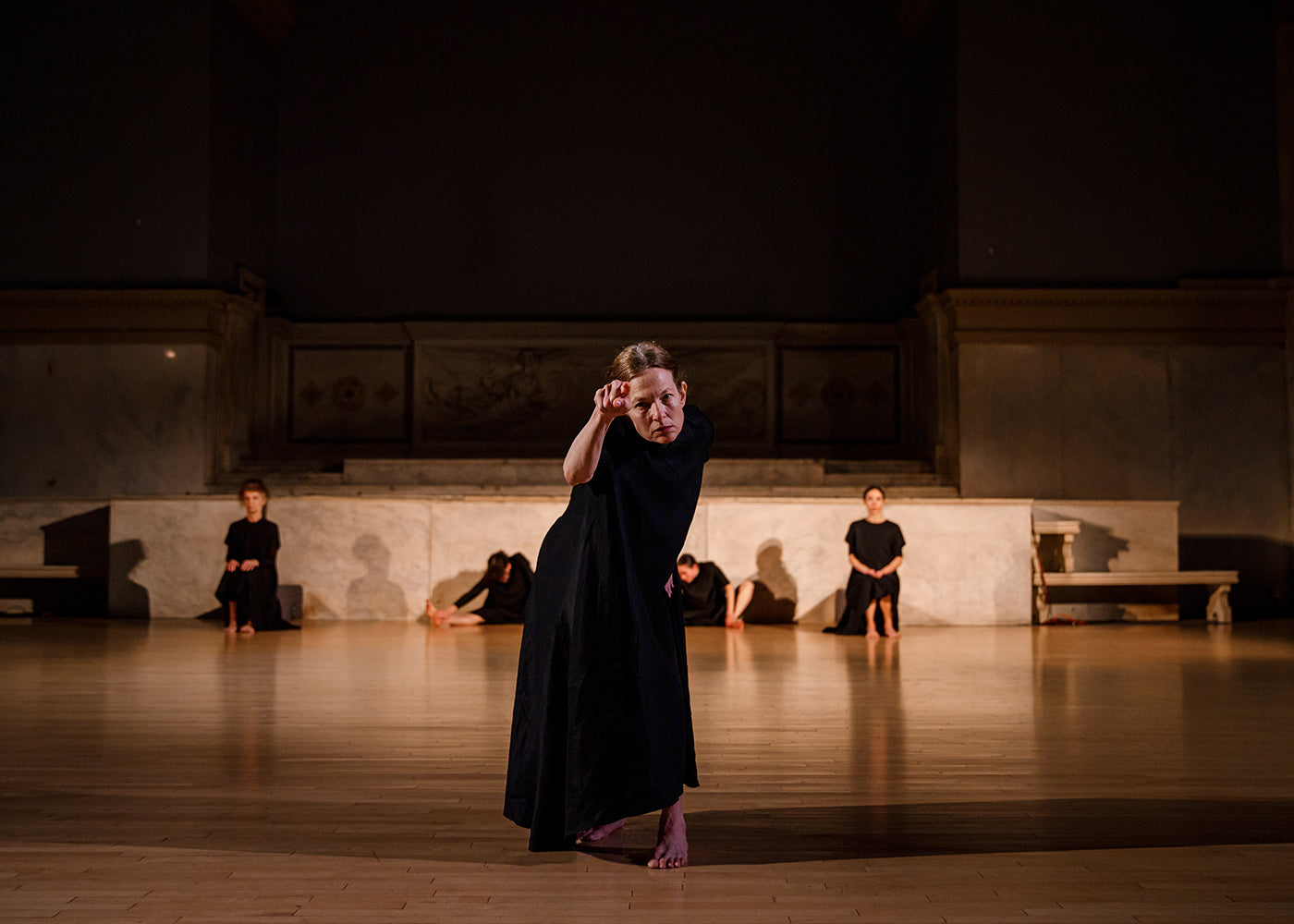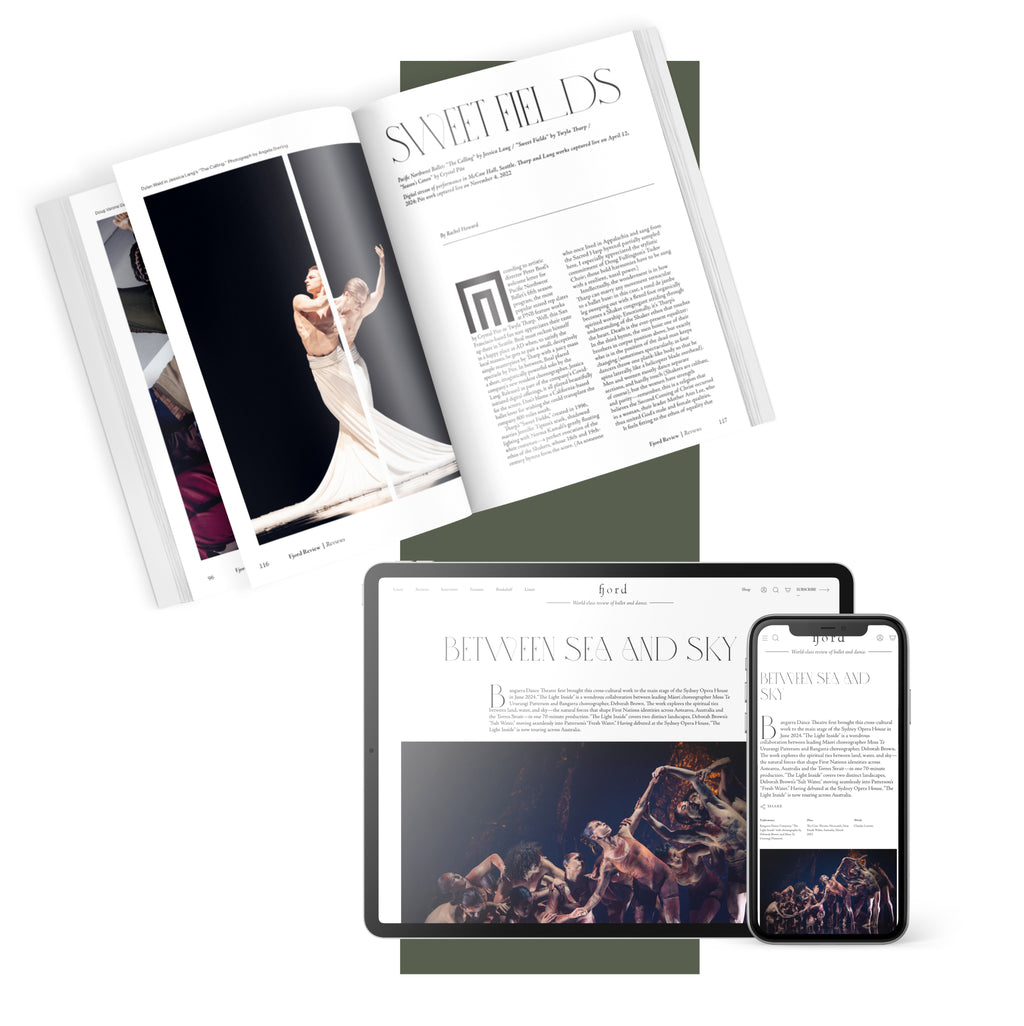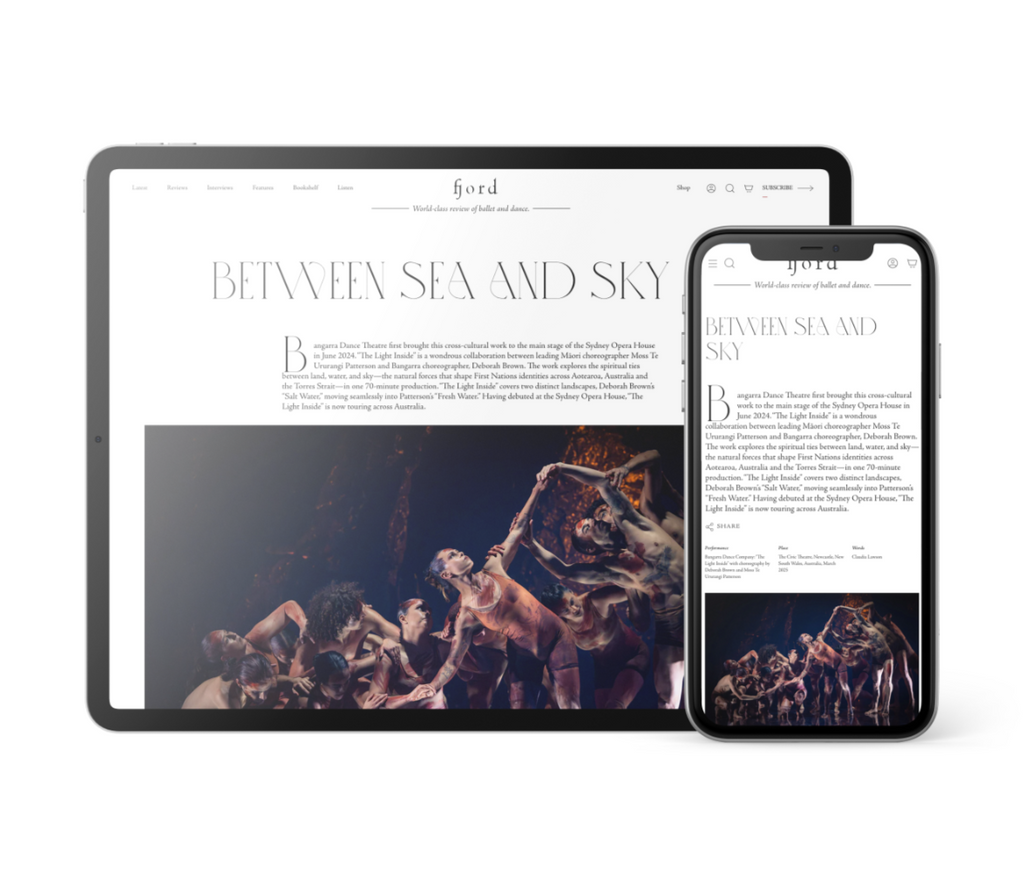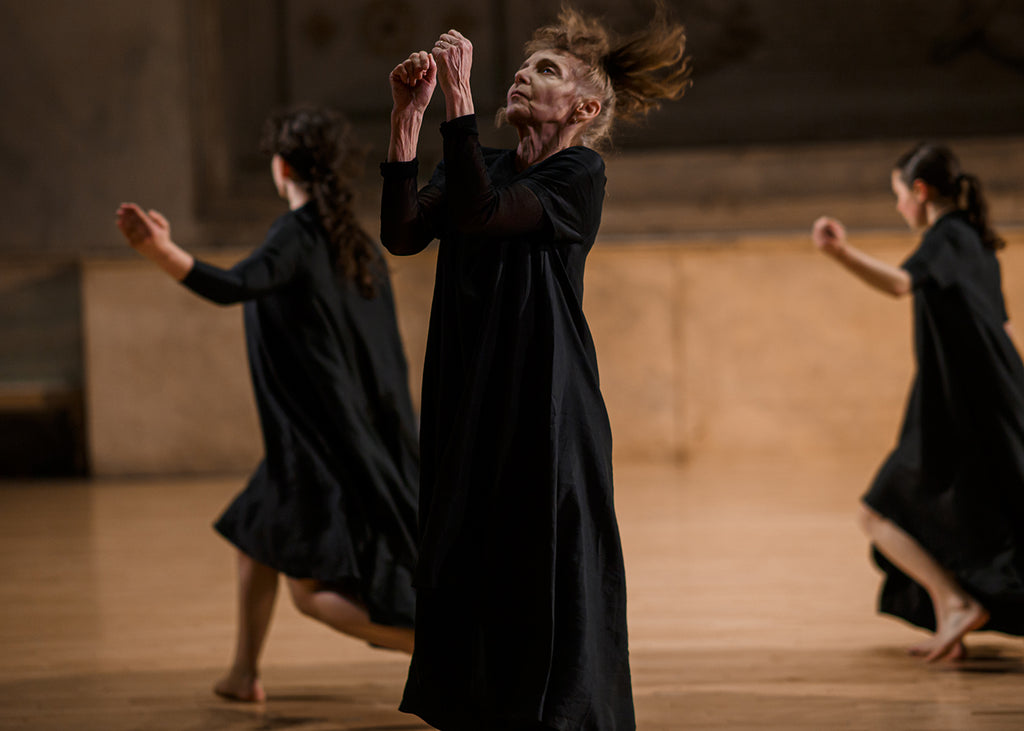Mishima’s Muse
Japan Society’s Yukio Mishima centennial series culminated with “Mishima’s Muse – Noh Theater,” which was actually three programs of traditional noh works that Japanese author Yukio Mishima adapted into modern plays.
Continue Reading
World-class review of ballet and dance.
On one of the first spring-like days this year in NYC, I arrive at Barnard College to observe rehearsal for John Jasperse’s new piece, “Tides,” which will open the LaMama Moves! Dance Festival on April 10. Jasperse, tall and lean, introduces the dancers who are warming up, and asks me to imagine the deep tunnel shape that is the Ellen Stewart Theatre stage instead of this light-filled studio. Composer Hahn Rowe attends to an iPad where his original score is recorded. The hour-long “Tides” is delicate and quirky, fascinating to watch. It interlaces a contemplative pace with sections so active they leave the dancers panting. At the end, Jasperse has one note—the whole “garden section” has gone really wrong. He doesn’t know what exactly. He’ll watch the video. Right now they need to try on some costume options. Nothing seems to work. Opening night is three weeks out.



“Uncommonly intelligent, substantial coverage.”
Your weekly source for world-class dance reviews, interviews, articles, and more.
Already a paid subscriber? Login

Japan Society’s Yukio Mishima centennial series culminated with “Mishima’s Muse – Noh Theater,” which was actually three programs of traditional noh works that Japanese author Yukio Mishima adapted into modern plays.
Continue ReadingThroughout the year, our critics attend hundreds of dance performances, whether onsite, outdoors, or on the proscenium stage, around the world.
Continue ReadingOn December 11th, the Alvin Ailey American Dance Theater presented two premieres and two dances that had premiered just a week prior.
Continue ReadingThe “Contrastes” evening is one of the Paris Opéra Ballet’s increasingly frequent ventures into non-classical choreographic territory.
Continue Reading
comments